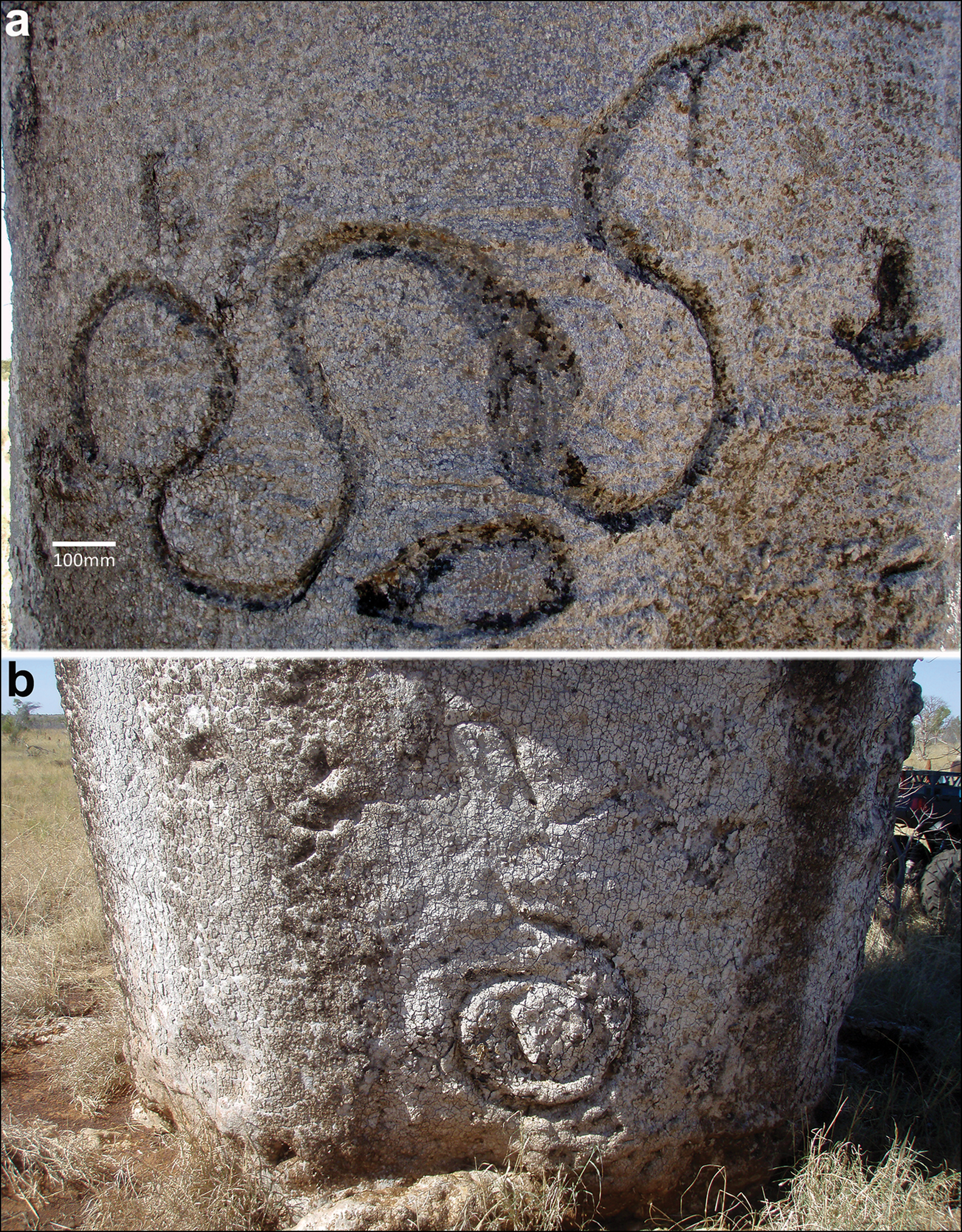Australia’s boab trees (Adansonia gregorii) are related to Africa’s baobabs that can live for 2,000 years. Boabs were a major source of food and shelter for the Indigenous people of the Tanami Desert, who engraved their bark with symbols resembling the famous rock art to the west. Despite the importance of these carvings to the culture, the trees are little-studied and threatened by climate change and old age.
Professor Sue O’Connor of the Australian National University is leading a campaign to change that. In research published in the journal Antiquity, O’Connor and co-authors describe the limited history of research on the boabs and collaborate with the Indigenous people of the desert to explore the meaning of the art in their bark.
“We are in a race against time to document this invaluable cultural heritage,” said Traditional Owner and co-author Brenda Garstone in a statement.
Historical policies of removing Indigenous children from their families interrupted the passage of knowledge about the meaning of the work on the boabs and the locations of the art had been partially forgotten. Co-author Anne Rivers was taken from her family as a child, but when reunited with relatives as an adult was given a traditional carrying vessel painted with boab trees “to symbolise the reestablishment of her bonds to her mother’s ancestral estate,” the paper says.
In the course of a survey last year O’Connor, Garstone, and Rivers were able to locate 12 engraved trees and study them in detail.
The most common markings are of snakes; “Followed by emu tracks and kangaroo tracks,” the paper reports. There are also geometric markings.
a) Open-mouthed snake and emu track (right), northern Tanami Desert. The carving is approximately 1.2 meters (4 foot) across. b) Boab tree with coiled and extended snake carvings, northern Tanami Desert. Image Credit: Darrell Lewis
One of the trees, the largest, is 12.25 meters (40 feet) around its base, but the ages of Australian boabs, in general, are unknown, let alone these specific trees. “They are often said to live for up to 2,000 years but this is based on the ages obtained from some of the massive baobab trees in South Africa which are a different species,” O’Connor said in a statement.
“We simply don’t know how old the Australian boabs are. It is vital we obtain some direct ages for these remarkable Australian trees, which help tell the story of First Nations Australians and are the source of a rich cultural heritage.”
The age of the engravings is even more mysterious, but they could date back centuries in the light of accounts of Indigenous people restoring and repainting them over generations.
The trees are mostly so remote from modern activity that they are not threatened by logging or mining. However, something – possibly climate change – is having a devastating effect on baobabs in Africa, where they are most abundant, so there are grave fears for their Australian counterparts and the art carved on them.
a) Enlargement of snake carving showing areas of damage to bark caused by larvae. b) Location of carving on boab shown in a). c) Partially collapsed boab with elaborate snake carvings in trunk and low branches. d) Darrell Lewis sitting next to low branch with deeply carved snakes. Image Credit: Sue O’Connor/Darrell Lewis
The trees identified may be just a selection of what is out there. O’Connor noted hundreds of boabs are visible on Google Earth in areas the team never reached.
The coastal rock art, with which these engravings show strong connections, may appear more durable. However, some were blown up in mining operations two years ago, and a proposed gas processing plant in the Pilbara may pose a threat to the world’s greatest concentration of rock art.
Boabs did not spread outside a limited area of north-western Australia as shown here, with the survey area marked in green and crossed by the King Brown Snake Dreaming path. Image Credit: O’Connor et al., Antiquity, 2022
The study is published in Antiquity.
Source Link: Scientists Are Racing To Record Indigenous Carvings On Australia's Ancient Boab Trees
